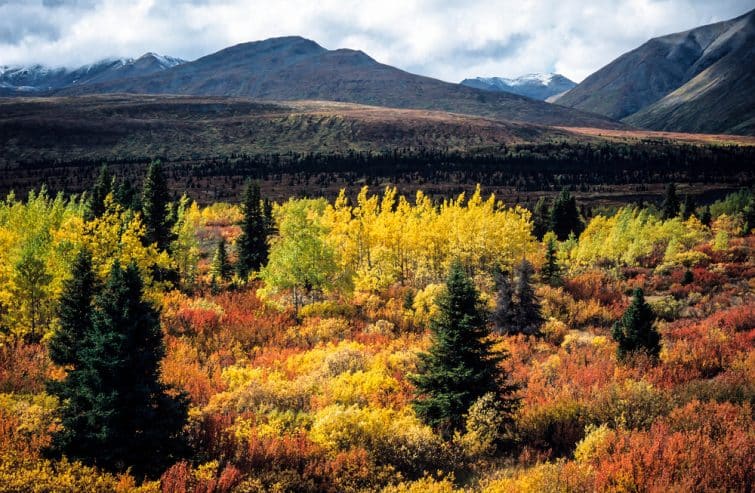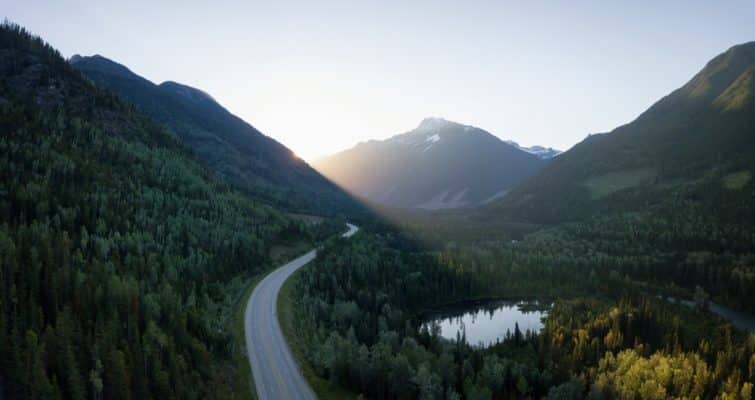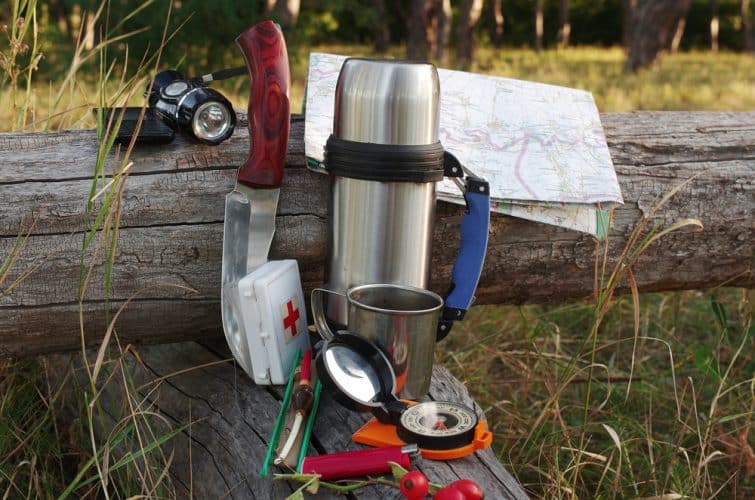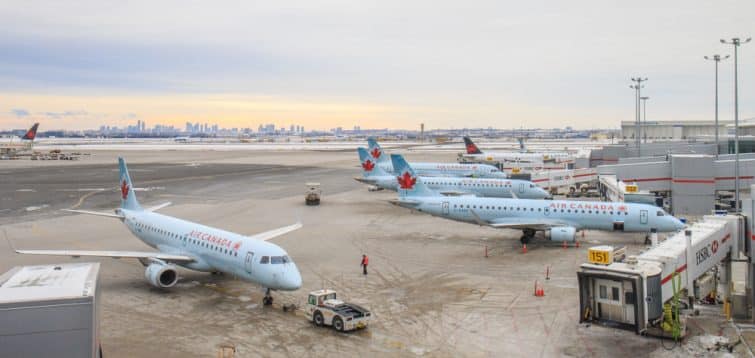Experience the thrill of motorhoming in Canada and explore its stunning landscapes and untamed wilderness like never before!
How to visit Canada by motorhome or campervan? Discover the Great White North!
Canada is a stunning country with a rich colonial and modern history. Jacques Cartier was among the first to discover this land, and since then, it has become one of the most visited countries in the world.
From breathtaking landscapes and lakes to Indian reserves and bustling metropolises, Canada has something to offer every type of traveler. And what better way to explore this vast and diverse country than by hitting the open road in a campervan or RV?
Whether you choose to travel from Montreal to Vancouver or take a different route that includes Toronto, Ottawa, or Edmonton, each province in this maple-syrup-drenched land will offer its own unique charms and unforgettable experiences. So buckle up, hit the gas, and get ready for an adventure of a lifetime!
Do you want to visit Canada by motorhome or campervan? Here’s our short guide for your Motorhoming In Canada!
Page Contents
Motorhoming In Canada: A Guide to Renting Campervan and Explore Canada
Key Takeaways on Motorhoming in Canada: - Canada is a vast and diverse country with stunning landscapes, lakes, and bustling cities, making it a great destination for motorhome or campervan travel. - There are numerous options for itineraries in Canada, whether you want to explore a single province or cross the country from coast to coast. The suggested itineraries provide examples based on different durations of stay. - It's recommended to make an online reservation for renting a motorhome in Canada before your trip. Platforms like Outdoorsy can help you find the perfect vehicle. - When driving in Canada, it's important to follow the traffic rules and regulations. Canadians are known for safe and courteous driving, but you should still remain alert and drive defensively. - Certain limitations apply when traveling by motorhome in Canadian cities. It is prohibited to drive a motorhome in urban areas, so you must park it on the outskirts of cities and explore using alternative transportation. - Adhere to the blood alcohol level limit of 0.8/L while driving in Canada. Exceeding this limit can result in severe consequences. - Speed limits and road conditions in Canada may vary. Pay attention to speed limit signs and be cautious while driving, especially on highways with potential potholes. - Most highways in Canada are toll-free, but gasoline can be expensive. Consider crossing the border to the United States for cheaper fuel if visiting Niagara Falls. - Parking overnight in legal areas is crucial when traveling by motorhome. Use apps like Caramaps or park4night to find suitable motorhome parking areas and campgrounds. - Prepare for your motorhome trip by packing essentials like sunglasses, sunscreen, first aid kit, mosquito repellent, toiletries, camping cookware, and appropriate clothing for the season. - The best times to travel by motorhome in Canada are mid-April to June and September to mid-October. Avoid traveling during winter due to harsh weather conditions. - When planning your trip, consider the international airports in Montreal, Toronto, Vancouver, and Calgary as entry points to Canada.
When is the best time to travel by campervan in Canada

Photo credit: Shutterstock / Reinhard Tiburzy
Canada’s climate is continental, with very cold temperatures in winter and hot and humid temperatures in summer. Temperatures can range from -40 °C to +40 °C. The best times to visit Canada by motorhome are mid-April to June or from September to mid-October. During these periods, you will get the best experience of motorhoming in Canada. Spring in Canada is enjoyable with pleasant temperatures, and the Indian summer offers mild temperatures and the chance to witness beautiful autumn colors. It is not recommended to travel by motorhome during winter due to the harsh weather conditions.
One thing to keep in mind is that as you travel further north, temperatures will become colder, even during the summer months. However, most of the popular destinations are located in the southern part of the country, as much of Northern Canada is not accessible by road.
How and where to rent the finest motorhome rental in Canada?
If you’re planning to explore Canada by motorhome, it’s recommended to make an online reservation before landing. You don’t want to arrive in Toronto, Montreal, or Vancouver without a vehicle to start your adventure. The good news is that renting a motorhome or van is now easier than ever.
You can use online rental platforms such as Outdoorsy to find the perfect vehicle for your trip. Simply select the type of vehicle and your dates, and send a rental request to the owner. After payment, you’ll receive a confirmation email and you’re ready to hit the road and start your journey across Canada in your motorhome, and enjoy the awesome Motorhoming In Canada.
How and where to rent a motorhome in France?
Renting a campervan in Canada while being in France might not seem like the most logical option. To avoid any extra costs associated with transporting a campervan across the Atlantic, it would be best to book your rental through a Canadian platform like Outdoorsy.
However, if you do want to rent a campervan in Europe and travel around, there are other options available. Countries such as Italy, Spain, or Germany might be a better choice. In these cases, you can either book your rental online or pick it up at a local agency, which will provide you with one of the best motorhoming experiences,
Motorhoming Adventure in Canada – Inspiring Itinerary Ideas
Canada is a country of immense proportions, covering almost 10,000,000 km² of land. This means that there are countless routes you can take and destinations you can explore. Depending on the length of your stay and your personal preferences, you can tailor your itinerary accordingly. Thankfully, there are several options available to you.
Visiting a province
It is possible to imagine staying in the same province. The gigantic provinces will have no shortage of places to visit. Here are our course ideas:
- Nova Scotia: Halifax, Lunenburg, Cabot Trail, Cape Breton, Peggy’s Cove Lighthouse, Lakes (Boggy Lake, Ogden Round Lake, Bonnet Lake),
- New Brunswick: Fredericton, Moncton, Bay of Fundy, Mount Carleton, Kennedy Lake, Hopewell, Village Acadien de Bertrand, Saint-John, Bathurst, Swallowtail, Mirachimi River,
- Quebec: Montreal, the Laurentians, the Outaouais, the Saguenay, Lac Saint-Jean, Mont-Tremblant, Quebec City, Sherbrooke, Trois-Rivières, Gaspésie, Mauricie, Mastigouche Reserve,
- Ontario: Niagara Falls, Hamilton, Mississauga, Toronto, Lake Simcoe, Algonquin Park, Thousand Islands, Ottawa, Pukaskwa National Park, Wabakimi National Park, Manitoulin Island,
- Manitoba: Winnipeg, Wapusk National Park, Lake Manitoba, Hecla-Grindstone Provincial Park, Riding Mountain National Park, Clearwater Lake,
- Saskatchewan: Regina, Old Lake, Saskatoon, Missinipe, Grasslands National Park, Gravelbourg, Cypress Hill Park, Cold Lake,
- Alberta: Banff National Park, Calgary, Moraine Lake, Dinosaur Provincial Park, Edmonton, Jasper Canada Park, Willmore Wilderness Park, Little Slave Lake, Grande Prairie, Fort McMurray, Athabaska Glacier
- British Columbia: Vancouver, Stanley Park, Capilano, Grouse Mountain, Tofino, Nothern Rocky Mountains Park, Spatsizi Wilderness Plateau, Bowron Lake, Wells Gray Park, Prince George, Yoho National Park.
As you can see, visiting Canada by motorhome is ideal as there are many things to do. However, you will have to adapt your itinerary and make choices depending on the length of your stay.
Crossing Canada
A great option is to travel across the country, from one coast to the other. It can be a practical and fascinating experience. As we mentioned earlier, you may need to make some tough decisions and adjust your itinerary based on the duration of your trip. Here are some suggestions to help you plan your journey:
- 7 days: Montreal, Ottawa, Toronto, Niagara Falls, Winnipeg, Banff National Park, Vancouver,
- 10 days: Montreal, the Laurentians, Ottawa, Toronto, Niagara Falls, Algonquin Park, Winnipeg, Banff National Park, Vancouver,
- 15 days: Quebec, Mauricie, Montreal, the Laurentians, Ottawa, Toronto, Niagara Falls, Algonquin Park, Winnipeg, Baff National Park, Jasper Canada Park, Vancouver,
- 30 days: Quebec, Saguenay, Lac Saint-Jean, Gaspésie, Mont-Tremblant, Trois-Rivières, Montreal, Halifax, Moncton, Fredericton, Sherbrooke, Laurentians, Outaouais, Ottawa, Toronto, Niagara Falls, Manitoulin Island, Algonquin Park, Winnipeg, Riding Mountain Park, Cold Lake, Edmonton, Calgary, Banff National Park, Moraine Lake, Jasper Canada Park, Rocky Mountains, Noho Vancouver National Park.
- 45 days and more: Quebec, Saguenay, Lac Saint-Jean, Gaspésie, Mont-Tremblant, Trois-Rivières, Drummondville, Montreal, Halifax, Saint-John, Moncton, Fredericton, Kennedy Lake, Village Ancien Acadien, Sherbrooke, Laurentians, Outaouais, Ottawa, Toronto, Niagara Falls, Manitoulin Island, Algonquin Park, Winnipeg, Riding Mountain Park, Cold Lake, Edmonton, Calgary, Banff National Park, Moraine Lake, Athabaska Glacier, Jasper Canada Park, Rocky Mountains, Noho National Park Nahanni National Reserve, Vancouver.
These route suggestions are subjective and require a certain pace. However, they can serve as great examples to help you plan your own journey. Keep in mind that you are free to make changes to the stages and set your own rhythm based on your preferences and the duration of your trip.
Driving in Canada in a Motorhome: the traffic rules to Know
When driving in Canada, it’s important to follow the rules of the road, which are similar to those in France. This includes wearing a seatbelt and obeying traffic signs and signals. However, it’s worth noting that in Canada, yellow road markings indicate the same as white ones in France.
Be mindful that the traffic lights are located on the other side of the intersection than what you may be used to. It’s essential to have a valid driver’s license, which must have been obtained at least 1 year prior.
Canadians are known for their safe and courteous driving, so you won’t have to worry about aggressive drivers. However, it’s still important to remain alert while driving, especially when navigating through traffic or encountering impatient drivers during rush hour.
Additionally, keep an eye out for one-way streets indicated by directional arrows on signs. Flashing green lights indicate that you have the right of way, so proceed with caution.
The difficulty of metropolises
While traveling by motorhome in Canada offers some freedom, it also comes with certain limitations. One of these is that it is prohibited to drive a motorhome in urban areas. This means that if you want to visit cities like Montreal, Toronto, or Vancouver, you must park your motorhome on the outskirts of the city. Failing to do so can result in a fine, and Canadian police are known to enforce this rule strictly.
Blood alcohol level
When driving in Canada, it’s important to adhere to the laws surrounding alcohol consumption. Although the limit is slightly higher than in some countries at 0.8/L, it’s crucial not to exceed this threshold. Otherwise, you risk facing severe consequences, including a fine of CA$ 1000, license withdrawal, and a criminal record. So, it’s essential to respect the laws to ensure the safety of everyone on the road.
Speed limits
If you visit Canada by motorhome, you will quickly notice that road maintenance is not as good as in France. It is not uncommon to come across potholes, even on a highway. Also, speed limits differ slightly. In Canada, you have to drive at:
- 30 km/h, on small city roads or roads with heavy pedestrian traffic,
- 50 km/h, in conventional urban areas,
- 90 km/h, on expressways,
- 100 km/h, on the motorway.
Whatever happens, limitations are indicated very often. Just follow them.
Highway tolls in Canada: what price for your category of motorhome?

Photo credit: Shutterstock / EB Adventure Photography
In Canada, you’ll be glad that most highways are toll-free, saving you a lot of money on your trip. However, keep in mind that gasoline can be quite expensive in Canada, so plan your budget accordingly.
Additionally, it’s worth noting that the highway numbers are displayed on signs instead of directions, which can be confusing at first. If you’re visiting Niagara Falls, consider crossing the border into the United States, where gasoline is generally cheaper, and fill up your tank.
Motorhome areas in Canada: where to park?

Photo credit: Caramaps
If you plan on visiting Canada by campervan or motorhome, there are some important rules to be aware of. The first rule, as mentioned earlier, is that parking and driving motorhomes are prohibited in metropolitan areas.
Additionally, it is crucial to park your motorhome in a legal area overnight. So, do not take the risk of stopping in a shopping center parking lot or making a rest stop, as a motorhome cannot stay parked for more than four hours. You must find legal parking areas, which can cost between CA$ 40 and CA$ 90, depending on the amenities provided.
Campgrounds in Canada are classified as:
- 1 service, which includes electricity,
- 2 services, which includes electricity and water,
- 3 services, which includes water, electricity and vehicle draining.
To facilitate your search for parking areas, you can use applications such as Caramaps or park4night, which identify motorway areas and allow you to view them. You can also add spots not yet indicated.
Prepare your trip to Canada by motorhome

Photo credit: Shutterstock / Zelthyshev
Getting ready for a motorhome trip to Canada involves considering what you’ll need to bring along. It’s easy to get sidetracked while preparing and forget important items. To avoid this, here’s a list of things to pack and tasks to complete before setting out:
- Sunglasses, sunscreen
- Swimwear
- Panel of mobile applications: Waze (GPS), Park4night, maps and tourist guides
- Phone battery cables, adapters and chargers
- First aid kit (dressings, antiseptic, Betadine, etc.)
- Mosquito repellent
- Toilet paper
- Cleaning wipes
- Liquids (dishes, soap, shower, shampoo)
- Camping cookware
- Stove and gas refills
- Water bottles
- Small board games, dice and card games (for rainy days)
- Down and blankets, etc.
When preparing for your trip to Canada by motorhome, it’s important to bring appropriate clothing for the season. Even in the summer, mountainous areas can have cool nights. If you’re traveling during a cooler period, it’s recommended to purchase clothing and gear such as shoes and undershirts once you arrive in Canada. You’ll find products that are better suited to the weather conditions.
How to get to Canada?

Photo credit: Shutterstock / WorldStock
Canada is on the North American continent, so you have to plan plane tickets. From France, it is possible to connect the country, mainly by 4 international airports:
- Montreal and Pierre Eliott Trudeau Airport,
- Toronto and Lester B. Pearson International Airport,
- Vancouver and Vancouver International Airport,
- Calgary and Calgary International Airport-Banff.
It is recommended to prioritize Montreal and Vancouver airports whenever possible, as they are located near the country’s coasts and can reduce detours when traveling across Canada by motorhome. To find the best flight deals to Canada, flight comparison websites such as Ulysses can be helpful.
With all this information, you are now well-equipped to plan your road trip in Canada. Have you already had the opportunity to travel to Canada by motorhome? Feel free to share your experience in the comments section!
Can I bring my pet along in a motorhome rental in Canada?
The answer to whether you can bring your pet along in a motorhome rental in Canada depends on the rental company and the type of vehicle. Some companies allow pets in certain motorhomes, while others have a strict no-pet policy. You should always check with the rental company before booking and confirm their pet policy. You may also have to pay extra fees or deposits for bringing your pet along.
What is the minimum age requirement to rent a motorhome in Canada?
The minimum age requirement to rent a motorhome in Canada varies depending on the rental company and the type of vehicle. However, most companies require drivers to be at least 21 years old and have a valid driver’s license. Some companies may also charge an additional fee for drivers under 25 years old or impose other restrictions.
Final Word
We sincerely hope that our article on “Motorhoming In Canada” has provided you with valuable information and proven to be helpful for your upcoming journey.

